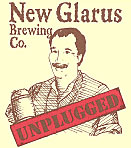Not long after Dan Carey of New Glarus Brewing returned from a trip to Germany in 1997 during which he was able to buy a beautiful copper clad brewing system because consolidation squeezed some breweries out of business he made an interesting observation.
He suggested that perhaps the United States was simply ahead of the curve in the middle of the twentieth century (in 1950 the top ten breweries accounted for 38% of production and by 1980 for 93%, with seven of those ten breweries soon to disappear). As America underwent a brewing revival other countries felt the pain of consolidation that had already swept through the U.S.
I thought of what he said this morning when I read this:
. . . the brewery’s owner told how today’s big brands took advantage of the situation to to expand in such a brutal way. They had a huge advantage, they were able to guarantee consistent quality. Many of the regional breweries weren’t in a position to do that. During the previous four decades hardly any investment had been made on their equipment and technologies. So people got used to drinking the brands that to this day enjoy an enormous popularity without realising the gradual drop in their quality.
Today, regional and micro breweries are slowly gaining more market share . . .
The country in question?
The Czech Republic.
Thoughtful commentary about beer culture that could be applied in how many different countries? From Pivní Filosof-Beer Philosopher — go read it.
 In all fairness to Todd Haefer – who writes a Beer Man column that appears in many newspapers part of the Gannett chain and already catches enough grief for some of his comments – he didn’t write the headline and the term didn’t appears in his copy, but here it is:
In all fairness to Todd Haefer – who writes a Beer Man column that appears in many newspapers part of the Gannett chain and already catches enough grief for some of his comments – he didn’t write the headline and the term didn’t appears in his copy, but here it is: